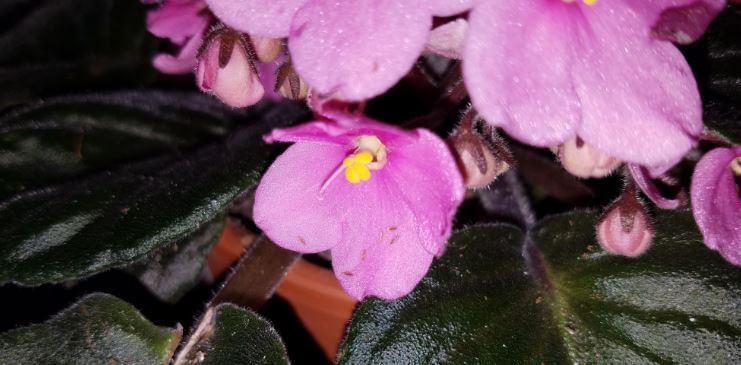Last Updated on September 12, 2023 by a Friendly Gardener
Imagine buying a pretty African Violet plant and discovering you’ve also acquired a batch of thrips. It can even be worse if these pesky pests spread to your other houseplants. You may have a thrips infestation attacking all your green babies in no time.
The Saintpaulia Ionantha, popularly called African Violet, is particularly attractive to thrips. Often, thrips that invest African violet plants are the banded greenhouse species (Hercinothrips Femoralis) that can do severe damage. Thrips are tiny insects about one-sixteenth of an inch in size with a long and narrow shape. They possess little wings that enable them to fly, which can be exceptionally helpful.
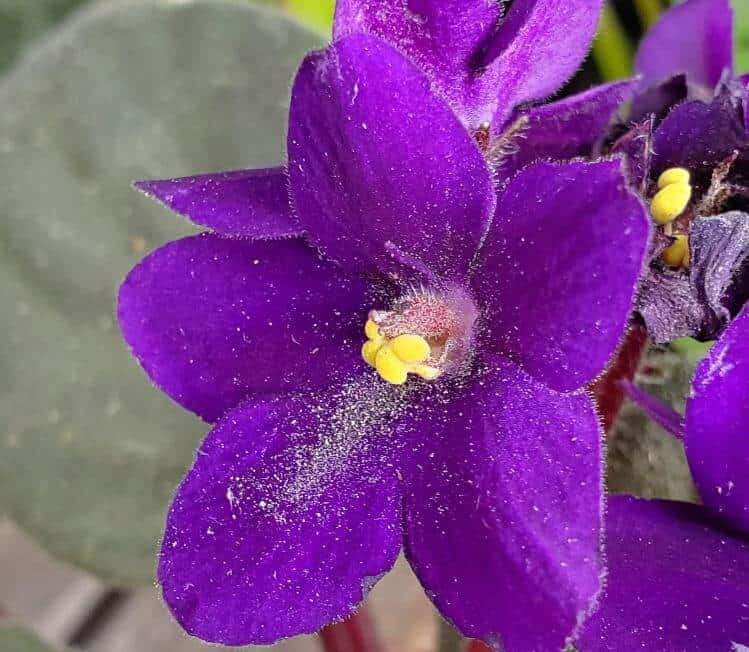
One thing to consider is that thrips are a very persistent kind of insect, and they are notorious for focusing their attention and feeding on African Violets. They zero in on flowers and foliage, puncturing plant tissue and sucking out its sap. A significant issue with ridding your plant of thrips is their visibility or invisibility. They are extremely difficult to see.
Observing them can be challenging as they are so tiny, but when they become agitated, their wing movement enables detection. You can confirm their presence by blowing on leaves or tapping them gently. Their activity should be visible. They appear to be minuscule white grains on the plant when not in movement. Another sign that thrips are present on your African Violet is silvery spots on leaves and flowers.
Loose pollen dust found on the petals of blooms is also a sign of their presence on your African Violet. The appearance of pollen dust is due to thrips feeding on the flowers’ pollen sacs so that the powder is released. Damage to foliage and flowers can include spotting, streaking, and occasionally holes. As the damage progresses, leaves can turn brown, with edges becoming necrotic. The plant’s growth will slow, eventually weakening it and causing it to appear stunted.
Self-pollination characterizes an infestation of thrips. Generally, African violets cultivated indoors will only produce seeds if a plant parent transfers pollen manually. Thrips, however, will carry pollen around and throughout the plant, enabling pollination. If African Violets suddenly begin to produce fruit, thrips may be the culprits.
Controlling Thrips on African Violets
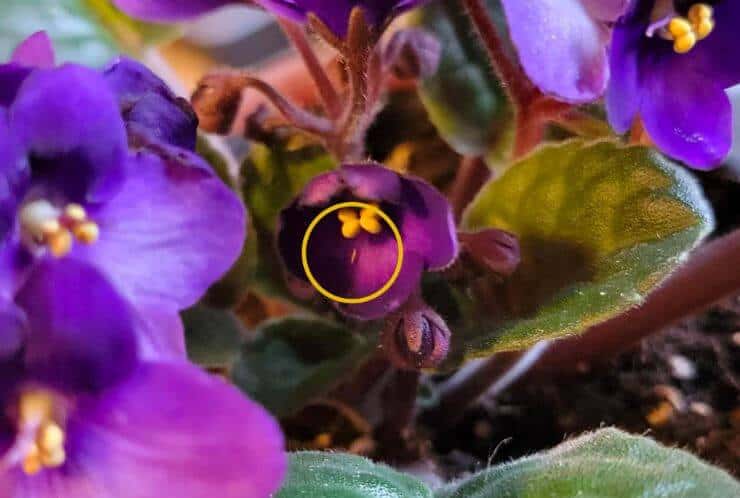
The adage ‘prevention is the best medicine’ is excellent advice regarding thrips. Make it a point to examine a new African Violet plant, whether purchased or received. Thrips are known to spread incredibly fast in nurseries and garden centers, so it shouldn’t come as a surprise if a plant brings them home. Check for damage to foliage and flowers or pollen dust. Tap or blow to send them running.
When pests of any type attack your African Violet plant, it’s essential to identify the insect and act immediately to avoid the spread of the infestation. Your first act should be to quarantine your African Violet. Pests multiply rapidly, so move your plant to a location as far away as possible from other houseplants. Find a spot where there is no other vegetation, or if this is not possible, try placing the infested plant in a transparent container that closes securely, such as a closed terrarium. An enclosed space will reduce watering needs but may save you some time when combatting the infestation.
How to Get Rid of Thrips on African Violets
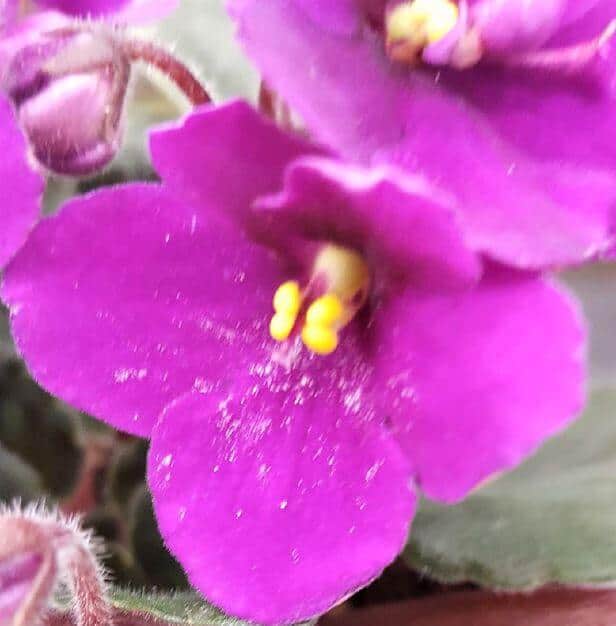
If thrips infest your African Violet plant, your first action should be removing all the blooms and their stalks from the plant. Use sterilized pruning scissors and trim them off. For the following period of three to six months, trim off all buds and flowers that emerge. The repeated pruning of flowers is an essential move because thrips prefer to live inside African Violet blooms for part of their lives. If you can eliminate their roosting place, it is a crucial tool in limiting the spread of the infestation. Another critical thing to do is repot your plant, as thrips will pupate in soil beds.
Use some kind of pesticide to remove these pests, trim off flowers, and repot your plant in fresh potting soil. Many African Violet enthusiasts believe that insecticidal soap containing spinosadis a perfect option for killing thrips on African Violets. Another organic natural alternative is Neem oil spray, which is not toxic to humans and pets. Imidacloprid is also an option.
While an organic choice can be safe when used on indoor plants, as can any treatment with rubbing alcohol on affected plants, caution should be used when opting for a chemical pesticide like imidacloprid. Gloves, protective glasses, or goggles must be worn, and any chemical should be applied in a well-ventilated location. Know that if plants treated with these chemicals are transferred outside during warmer months, these pesticides can have adverse and damaging effects on pollinators such as bees. Consider making any chemically treated African Violet a permanent indoor houseplant.
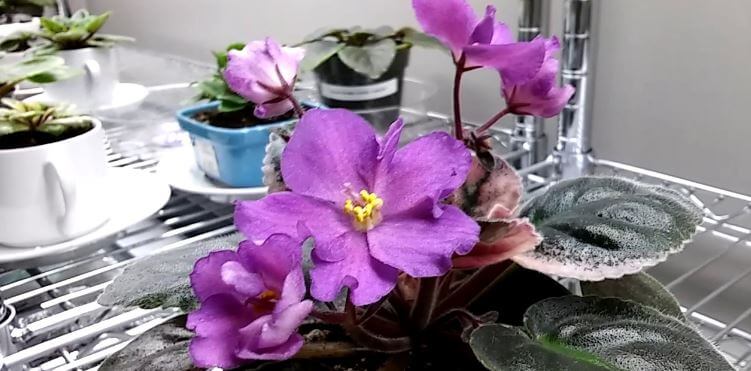
Small children and pets should be kept away from any African Violet treated with chemical pesticides. The soil of a plant treated with chemicals should also be disposed of properly.
Whichever of these you may choose, know that you will most likely need to repeat treatments, as riding an African Violet of thrips is challenging and rarely can be accomplished rapidly.
In Conclusion
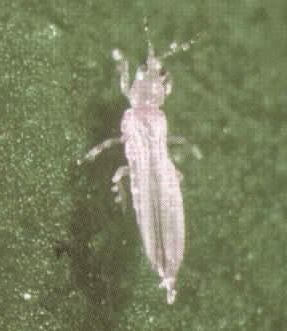
Thrips on African Violets can ruin these beautiful houseplants. To prevent a thrip invasion, begin by examining new plants thoroughly and isolating them briefly. If thrips do appear, removing flowers and treating your plant should aid in eliminating them. It may require some time and a bit of work, but patience and consistent effort will restore your African Violet’s overall health.

